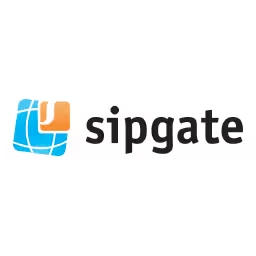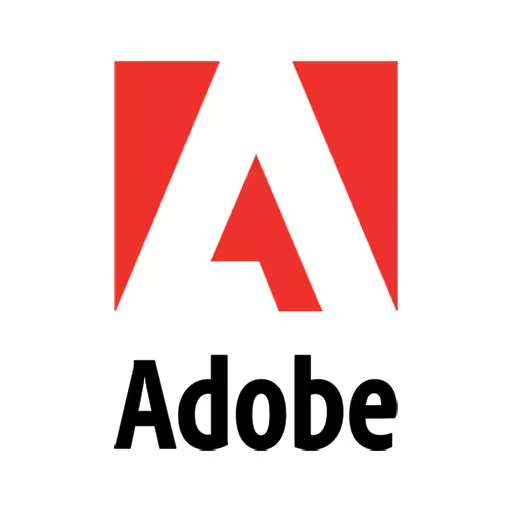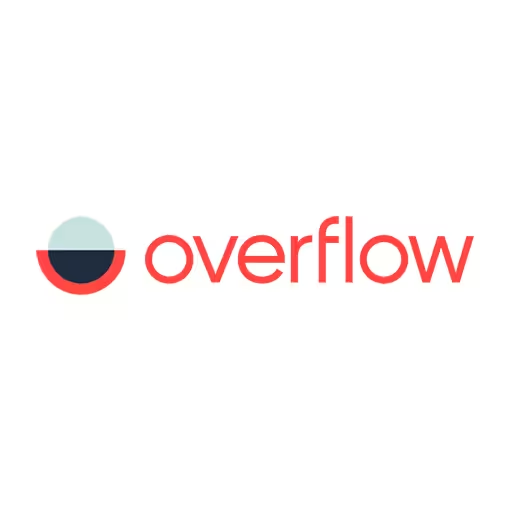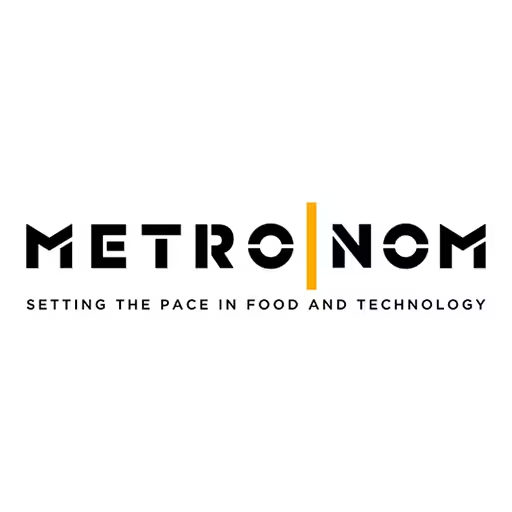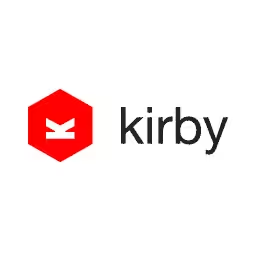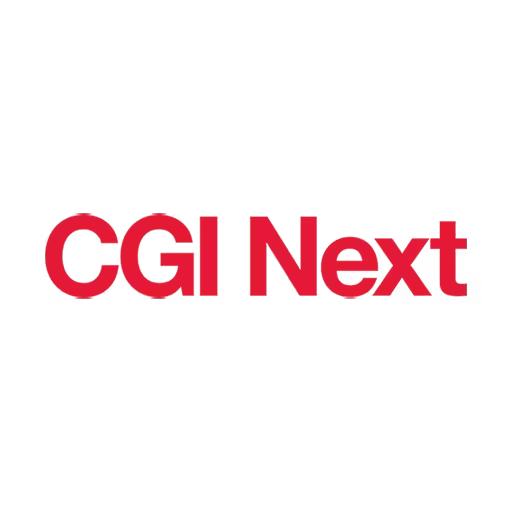Vic Lee
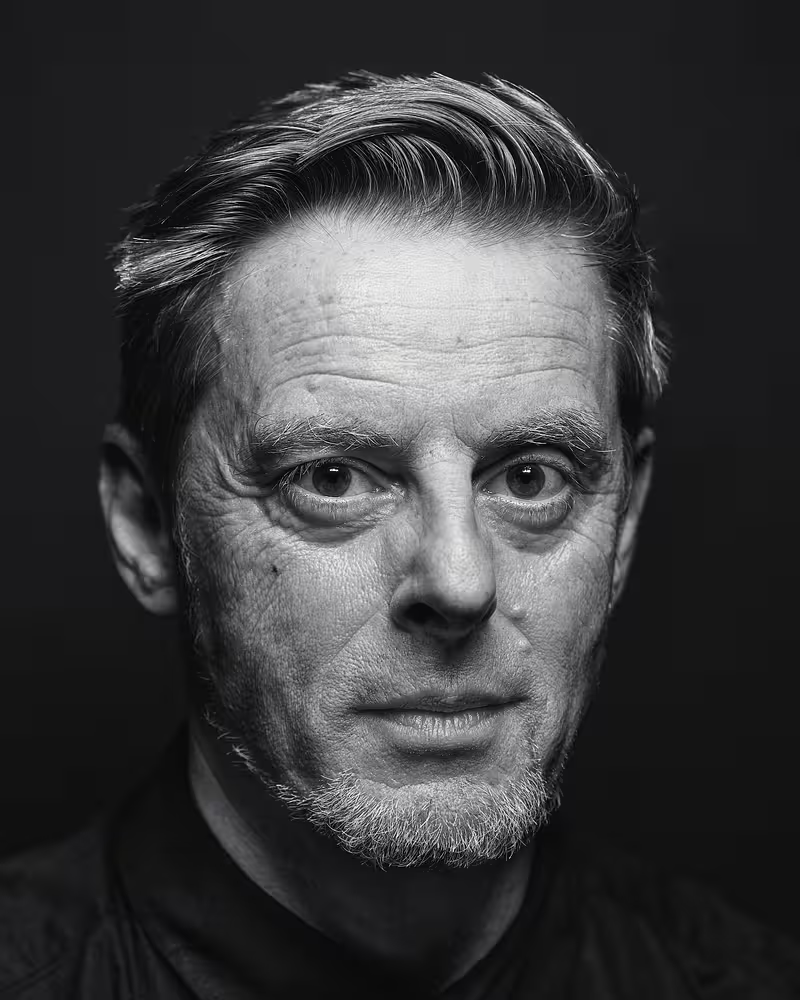
Vic Lee is a poet, an urban wordsmith who beautifies surfaces with typographic fantasticalisms. An ink loving, coffee supping, spoked wheel rider from London Town. He breaks bland with elaboration and modern elegance.
An observer of street life and schemer of wall applications, Vics work stimulates your imagination and a memory of a bygone age, perhaps that you never were part of, but feel you could relate to.
Using typography and frolicking lines, his art has been commissioned by the likes of Nike, Virgin Atlantic, Mercedes and The Famous Grouse to name a few. There is a romanticism to Vics work that encourages engagement and a smile in the mind.
His murals are freestyled and rarely planned out. His sweeping lines are testament to his commitment to his artform, Its a union of sorts between his pen and the surface he works to, an understanding of the visual harmony that can make a surface breathe and come alive.
It’s like standing on a cliff edge with a pair of rollerskates on.... invigorating.
Talk: No Effing Failure
Vic will talk about his beginnings, how he got started as an illustrator, muralist, wordsmith and man of many Inkings.
But to get to where he is has been a journey, from working 7 days a week, to constantly challenging himself and getting noticed in an increasingly flooded market.
Vic will talk about hard work, how it pays off. Being reliable, always saying yes, and getting new clients. It's not a quick fix, but a dedicated daily routine to being the best he can be and to think of the next thing before some other sucker does.
Vic will show how his clients trust him, from Nike to Virgin, The Tate to some of the worlds best design agencies. It's not about slacking or being scared and its realising that there is no such thing as failure.
Transcription
[Digital music]
Vic Lee: Hello. My name is Vic Lee, and I am an illustrator and, some say, artist--
Audience: [Laughter]
Vic: --from London Town, and today I will be mostly talking crap.
Audience: [Laughter]
Vic: Yeah, let’s begin. Hi, Dusseldorf. Thank you for having me, and thank you for coming in on such a crappy day today. It’s a real pleasure to be here. I’m going to waffle on because I’ve got loads of slides to show you, and I’m a little bit nervous, so let’s just go through it.
There’s a saying, which was written by a very famous entrepreneur. “There is no life I know to compare with pure imagination. Living there, you’ll be free if you truly wish to be.” This was obviously by Willy Wonka who owned the chocolate factory, and imagination is really important because the one thing that we human beings have is imagination.
Without imagination, none of you would be doing what you’re doing, basically, because the people who were the forerunners to what you are doing had the imagination to develop stuff their way and do things that they want to do. Obviously, you guys have gotten mad imaginations as well, so you’re going to be the next people that do that.
My imagination started from a very early age, so these are sketches that I did from probably the age of 7 or 8 through to about 15, 16, so I used to get magazines and comics. My dad used to bring home big sheets of paper from work - “borrow” sheets of paper from work.
Audience: [Laughter]
Vic: I’d lock myself in my room, and I would draw and paint. I would take magazines, and it’s kind of like, for me, illustrating is like therapy. I’d switch off. And, because I was from quite a poor background, the way that I kind of got through a lot of angry situations was through illustration.
My mom died of cancer when I was three, so there was kind of a lot to sort of deal with from quite an early age. I realized that, with illustration, that is my kind of way to deal with a lot of subsequent problems that arise throughout my life, basically.
I was a bit of a late starter, so I went to university when I was 29, after becoming a postman, a decorator, I worked on a cruise ship, restored billiard tables. I basically just bummed around for quite a lot, but I was always working.
Then, I suddenly thought, I need to get an education. So, I studied as a graphic designer. I’m not going to show you all my graphic design work. It’s like 20 years, and that’s not why I’m here.
What I did when I was a graphic designer was, when a project came up, I would be the lead creative. Then I would kind of introduce illustration into the design. Then I would charge not only my freelance rates, but also illustration rates as well.
I started really enjoying the illustrative side to graphic design, and I played a lot with digital illustration as well. There used to be an old app. There’s 10% of you. I don’t know how old the average age is here. I used to use a thing called Macromedia Freehand.
[Cheers]
Vic: Yes!
[Applause]
Vic: Big round for Freehand!
[Applause]
Vic: Far better than Adobe Illustrator.
Audience: [Laughter]
Vic: But, it got sucked up by Adobe, and it kind of got buried, but Freehand was absolutely a blimey app. It was so easy to use. A lot of these illustrations, digital illustrations, were in Freehand. It’s a shame that it disappeared.
But, as I progressed into graphic design, I started doing more three-dimensional work. My design agencies where I worked as a freelance would say, “Vic, can you do some illustrative work? Can you create visuals for this?” Interiors or do some concept designs for objects in supermarkets and various other things. I was doing the graphics as well as the visuals as well.
I started enjoying this more and more and more. I realized that it was affecting me, and I was kind of getting a little bit mad working in graphic design because it got to the stage where the account handlers were behind me just telling me to move a letter over or change a color slightly. I just got to an age; I got to 43, and I thought, “I don’t know if I can be a 50-year-old graphic designer because I have no idea what anyone is talking about who is 20 and talking about music.”
There was a reason for me to sort of get out. I actually had no idea what I was going to do. Then I discovered these things. These are calls pens. I don’t know if anyone has ever used one of these before.
Audience: [Laughter]
Audience member: Yes.
Vic: They’re amazing. Basically, liquid comes out of the end, and you can create lines and drawings with them. I discovered this again after 20 years working on a computer. I started drawing again.
I took three months off work just because I was completely burnt out working on so many projects, and I started drawing. Where I lived in London, a place called Lordship Lane in East Dulwich, I was sitting in a café one afternoon. I looked out, and I thought it would be really nice to draw all of the shops and businesses on this street.
This is a really crappy picture, so apologies for that.
It’s all freehand drawn, and I did a bit of research on the place. I kind of made up -- I didn’t make up. I took the history, and then I reworded it in a much more kind of modern take, so it was a bit more charming rather than just being factual.
This one print, I got a friend of mine to screen print them. I remember, I put them on a local forum, and I put them on a limited edition print of Lordship Lane -- I’ll go back -- a limited edition print of Lordship Lane. They were like 30 euros. I thought, “If they sell, that’d be great. If they don’t, whatever.”
Anyway, I put it on the forum. Within, like, ten minutes, all these emails come in that say, “I want to buy it. I want to buy your print. I want to buy a print.”
So, for about a month, I was driving around in my little rented Peugeot with a car full of tubes, prints, going around to people’s houses, knocking on doors, and giving them prints, and then they would give me cash. My rented Peugeot glovebox was absolutely stuffed with money for, like, every weekend. I was basically like a print dealer, if you like.
Audience: [Laughter]
Vic: It was great. I suddenly thought, this is amazing. I learned to screen print because I thought, well, I’ll cut out the middleman, and I do everything myself because it adds a little bit more to the print and the originality of the process itself.
That one print suddenly became two prints. Then those two prints suddenly became six prints. Then those six prints just grew, and it sort of grew and grew and grew.
These aren’t all the prints that I’ve done, but they’re all over London, so these are all different areas of London. What I realized was that people in London are really proud of their areas, their streets, and their postcodes. These were just selling out all the time, which was amazing.
But, I was still working as a graphic designer at the time, and my time--this is where the seven-day week comes in--was working five days as a graphic designer and then the evenings, I would print, so I’d drive down to East London. I would print. Then at the weekends, I would do exhibitions and shows.
I did this pretty much constantly for about six months. I didn’t really take a day off. It was just solid, solid work, but I loved it because people were buying my art.
I remember selling; when I first sold the first batch of prints, I dropped off, and delivered them. For the first weekend, I just kept all the money on a table. I was waiting for all these emails to come back going, “Your print is shit. We want our money back,” and they didn’t. They didn’t. I’ve literally had two prints back in maybe seven years, which was incredible.
On top of doing the shows, I also got leaflets printed. Then, when I wasn’t doing shows, I was doing leaflet drops around all of the houses in the areas, so this was like 3,000 leaflets, 3,000 houses. It’s a lot of footwork, so I was constantly working because I absolutely loved what I was doing, and I loved the effect and the responses that I was getting. I knew there was something in this that could take me out of graphic design.
I kind of had to start thinking about making a decision. My first, very first commission was drawing the Zetter Hotel in Clerkenwell, East London. They asked me to draw the townhouse that was being built behind as well as the Zetter in front.
Then this was printed, and they still use it today. They got it for an absolute song. It was like 500 quid, and they use it all the time on their websites and promotions. But, they’re a really nice client, and I’ve worked with them since in another hotel. I charged them more money for that one.
But, the ironic thing is, I thought to myself, “If I’m going to make this work, I need to move away from my home and move into a studio.” So, my studio view is on the left, and my very first commission is on the right, which I did six months previously. Bizarrely, I think I illustrated my future.
Audience: [Laughter]
Vic: Which is quite nice. So, in a way, there is that thing about making a decision to move forward. For me it was, as well as having responsibility of a mortgage, it was also having a responsibility of paying for a studio, but not really having many clients, but just relying on the prints. That has kind of spurred me on for future moves as well. I’m on my third studio now, and it’s big, so I’m expecting big things to happen.
The one thing I really loved was typography, the topography and playing about with words and patterns and how they combine. For me, this was a real passion. I totally enjoyed this, and I started moving things on a little bit. So, I became a storyteller because a lot of the prints had stories in it as well.
My first biggest -- my biggest -- first biggest commission was for Waltham Forest Council who had seen some of my previous work. They came to me, and they said, “Vic, we want you to do this hoarding, which is going to be up for six months. It’s in front of an old toilet block that’s going to be knocked down in E17. So, we want you to research the area, but we also want you to make stories up as well.”
Amazing client. I kept making all these crazy stories up, as well as finding out true stories which are very unbelievable about the area. I’ll tell you one in a minute. But, the council, I kept sending them stuff, and they didn’t even respond. They were like, “Yeah, love it.” And, I was like, “You haven’t read it. I could be putting anything up here,” but they were kind of really trusting of me. So, this one was actually printed because it was on Dibond panels.
One of the stories, I’ll quickly tell you. One of the stories was, I met a guy who owned a neon sign shop in East London. We were chatting away. Inside his shop, there was a polaroid from the very first Superman movie. It was the bit where mama Superman is carrying baby superman onto the rocket and then it flies off into space. Then his planet is destroyed.
I asked John about this. He said, “Oh.” He was a bit of a hippy. He said, “Oh, yeah.” He said, “We just had our first lad and we were on set.” He was doing the lighting. The director said, “Look, John. We need a baby for this shot, so can we borrow your son?” He goes, “Yeah! Yeah, that’ll be great.” So, technically, Superman comes from East London.
Audience: [Laughter]
Vic: Which is amazing. This is my public gallery now because, if you go into Google Maps, you can actually have a look for yourself. It’s been there for six years now. E17 is a bit of a rough area, so I thought, as soon as it goes up, it’s going to be absolutely trashed. It’s as clean and spotless as the day it went up because the locals have now adopted it, and I don’t think the council would actually ever be allowed to take it down, so that toilet block is just going to have to remain now, I’m afraid.
Audience: [Laughter]
Vic: Yeah, talking about stories, I tell stories. If I get a client who comes to me, I always say to them, “Look. We can work on the words. That’s great.” I’ll go into a bit more detail about how I work. “But, I’m going to need some small stories in between.”
This was for an Internet securities company called TurnKey. I thought it was going to be really dry humor stories that they were going to tell, but they sent me the spreadsheet, an Excel spreadsheet, obviously, and all these stories on it. It’s the first time that I’ve laughed out loud at a company’s stories, so I’m going to give you a couple of them.
Where they are in London Bridge, everyone knows that there’s a brothel across the road. It’s a really small street, so they have a CCTV pointed down. This is one of the stories.
“Capturing an arsonist on CCTV setting himself alight when he targeted the brothel across the road.”
This is no word of a lie. The police actually needed the footage because this guy had basically poured petrol through the letterbox, but he was so drunk, he’d actually dropped the match on himself.
Audience: [Laughter]
Vic: Another story was Dean, who was one of the owners.
“Dean once attended a BBQ at a client’s house. He somehow ended up dancing with somebody’s elderly mother-in-law and accidentally pile drived her into the patio causing severe head injuries.”
So, basically, that’s the granny. So, if you want to go back, you can actually see. There’s the granny there.
Audience: [Laughter]
Vic: And, there’s kind of loads of little stories. Yeah, I go into too many details. The point is that when I draw these, I never put a description of what the illustration means because it’s for the client to tell their clients. If a client comes in and says, “What’s that about?” it becomes a storytelling. It makes their work of who they are much more human and approachable as opposed to just being business.
Let’s go through. This is another one. Big Star Wars fans, a freestanding creative. They wanted loads of Star Wars stuff. They said, “The problem is, in the middle, we have an air vent and a fire alarm.” I went, “Yes, that’s fine. I can,” you know, there’s an air vent fighter and there’s a fire alarm death star. I can do that. It’s kind of making the client happy in a way that they don’t think of as well, so it’s my imagination making them feel good about themselves, which is the main thing.
My biggest thing that I say, what I can say now to my clients is, basically, “Trust me.” I’m kind of -- I’m a little bit lazy when it comes to sketches. I think this is going back to my graphic design days where we had to present, present, present to get the sign off by the client. Now, I do a sketch if somebody says, “We want a mural in this place.”
I did one for Havas, so I’ll give you -- this is my sketch for Havas. This is about as good as it gets. They said, “We want something on this wall. These are the words we want,” which is football analogies. They’re from a book.
I said, “Yeah, this is what you’re going to get, so you have to trust me. It’s not going to look like this.” They were like, “Vic, we trust you. That’s great. The only thing is, can you change ‘teste’ for ‘testa’ because ‘teste’ means something completely different in Italian?”
Audience: [Laughter]
Vic: It’s supposed to read, “Head, heart, and feet.” It actually reads, “Testicles, heart, and feet.”
Audience: [Laughter]
Vic: This is what I sent to the client. I didn’t amend it. I said, “Yeah, yeah, fine. Just leave it with me.” This is the final piece. From this, they have to use their imagination. Hopefully, when I do stuff, it blows them away enough for them to go, “That’s pretty cool.”
It’s nice. It’s a nice balance between what I do for my client and what they -- how they trust me to do something for them, which is why I’ll always over-deliver whenever I work.
Another one that I’ve worked on last month, this is for a design agency called Spark44. They’re a huge, global design agency. They’re bringing out a book for the agency. They asked me to draw, to illustrate on the inside of their book.
This is the sketch. This is the sketch that I sent over. They gave me the words, again, and this is the sketch they sent over. Then it’s all hand drawn in my studio, and then this is the final piece. I had to do six of these. I absolutely loved doing this just because they gave me, again, complete freedom.
A touch weird. That’s going to keep going.
So, I’m going to show you a movie. Who wants to see a movie? Am I that boring? Shit, man.
Audience: [Laughter]
Vic: [Laughter] It’s only an hour.
Audience: [Laughter]
[Electronic music]
Vic: Yeah.
[Applause]
Vic: Thank you. Thank you. I did the music as well, and I filmed it as well, so I really do cut out the middleman, as I said.
Audience: [Laughter]
Vic: So, getting work. It’s really difficult, as an illustrator, to get work. A lot of my friends find it really difficult. I find it difficult, as well, sometimes. But, I’m always, always marketing myself in any way that I can.
I think this kind of stems from the way that I was brought up. If you want something hard enough, then you have to go and get it because it is not going to come to you no matter what you’re hoping for. Sitting at home waiting for an email to arrive is not going to work.
Getting work, for me, I am constantly doing stuff. I ride, stupidly, in London. I bought this bike, and I did it up and sprayed it white, and then I drew all over it because that’s what I do.
I rode it around, and one day I was at my partner’s studio. The girl next door, her husband was in who is the creative director for Brompton bicycles. He came out. My bicycle was in the hallway. He saw it, and he came in.
He said, “Vic, I really like your bike. Do you think you could do something for Brompton?” I was like, “Yeah, that sounds cool,” so we did this thing, which was a hand-drawn, handmade Brompton, two hand-drawn handmade Bromptons, which were given out to the male and female winners at the Brompton world championships in England.
This was great fun, too. They basically sent me the frame. I drew all over it. They lacquered it, put it all together, and then it was given away.
It went down so well, and they had such a good response from it that they said, “Can you do a limited edition Brompton for us?” so we did a limited edition Brompton. I designed the vinyl that went on the bike. I designed the bag. And, it comes with a limited edition print as well.
The serial number of the bike matches the number of the print. There were only 500 made. When these launched in Taiwan, they sold out in two days, which is great for me.
Audience: [Laughter]
Vic: It was a really nice relationship, and I got a free bike out of it, which is great. And, that’s the thing is, like, just working on nothing, just drawing and just going, “I’m going to draw on this,” and then I’m going to just be out and about and see what happens.
Another example is sitting at home watching television. I drew these koi carp and hummingbird for no reason. I just drew them because I was watching some crappy TV. I thought, well, I might as well screen print them, so I screen printed them, put them on my website. Another agency saw that, which then led me on to doing a limited edition box and bottle for The Famous Grouse.
That’s basically just me sitting in front of the television. I didn’t market myself. I didn’t do anything. I did something, and that’s the point. I did something, and somebody else saw that said, “He could do that for us.”
I’ve just got to find out where I am.
So, this, to give you an idea of my timescale, I don’t know how long your projects are when you’re working. This is an average for me, my timescale. For this project, doing a box design and a label design:
- Monday: One brief on a Friday. The agency said, “Come in on Monday,” so I picked up the brief.
- Tuesday: They said, “We need sketches,” so I sent two sketches over to them.
- They said, “By Wednesday, we need the sketches amended. We need client’s approval and, by Wednesday afternoon, we need the route brief.
- By Thursday, the sketch was developed more. It was agreed by the client. Late morning the final design started.
- Friday: Artwork delivered.
That was basically a five-day turnaround from getting the brief to going to print. That is basically how quickly I can work.
A client can come to me. We can chat about stuff for maybe two months. Then, eventually, they’ll go, “Right. We’ve got sign-off. We need you to just come in on Wednesday, and it needs to be done by Friday.” It’s like, “Yeah, fine. I can do that.” I never say no, and I can be a curse at times.
When I did that, when the brief came in, I questioned myself. I thought, “Can I do that?” I realized that I can. I realized that I can do that.
I’m just going to turn this around.
And, when other jobs started coming in, so my first hand-drawn mural job was a shop in East London, again, who had got in contact me that had seen the Walthamstow Mural. I did this project. Again, did it for nothing. It was pittance, but I was there for four days drawing on the window.
The other thing about getting work is knowing what you’re doing and what you’re doing can lead to something else. For me, being in East London, being in a window during Clerkenwell Design Week, I’m basically just a live performance doing something. Because there are so many design agencies around Clerkenwell, the chances are somebody else is going to see what I’m doing and be interested.
That’s the other thing is finding out what the possibilities are from something that you do and realizing that you could do something for much less money, but think about the future consequences of that, where they can lead. This, basically, kind of led me -- well, it’s led me all over the world, basically, from that one mural painting on a window for a few hundred pounds.
I now go upper class to Los Angeles. How cool is that? Yeah, I mean if you’d said to me as a graphic designer, I mean the furthest I went as a graphic designer was Glasgow, an industrial estate in Glasgow. Now I go to L.A., Israel, Cannes, wherever. It’s so much fun, but I’m not going to say I’m lucky because I don’t believe in luck. Luck is just something that doesn’t exist. It’s perseverance. That’s the most important thing.
Move... It’s annoying me, touching me.
Audience: [Laughter]
Vic: Yeah, again, this is now my biggest mural that I’ve done, my biggest hand-drawn mural, which was for a company called Credit Karma in San Francisco. Instead of saying, “Can I do that?” I now say, “I can do that,” and that is how I deal with clients coming to me, when they ask me to do something, I always say, “Yes, I can do that,” because I think it’s important to push your boundaries.
I was talking to one of the other speakers, Karl, yesterday, over a few beers. We were talking about stuff. We ended up talking about families and stuff.
Growing up, my -- I’m of an age [laugh] where, if your car broke down, you fixed it. It wasn’t all electric. It was mechanical. You fixed; you basically fixed your car, and that’s how you learned stuff.
I learned how to plasterboard. I learned how to build. I learned how to do everything because I became very self-sufficient because that’s how I was taught. I would learn how to make things.
I think that goes back to this, which is, when I look at something, I go, “Can I do that? Well, if somebody else can do that, then, surely, I can do that. I may not do it as well as they can do it, but I’ll have a bloody good go at it.” You should see my plastering. It’s shit.
Audience: [Laughter]
Vic: It’s really bad. My first flat, I put a full ceiling in. I was plastering the ceiling. I was like this and this. I couldn’t get it. It was just a mess. It was a mess.
I was working at the time. I went back to work, and I spoke to a friend of mine, Alex. I said, “I just can’t get this frickin’ plasterboard ceiling flat.” He’s like, “Just put a downlighter on it. No one is going to look up.”
I thought, “You know what? That’s true.” It’s that thing. Don’t get lost in the details as well because, what people see, if you look at my murals, they look great from a distance. They look good closeup. But, when you get really close, they are quick. They are quick. I’m not saying they’re crap. They’re pretty amazing.
Audience: [Laughter]
Vic: But, just don’t get too close to them. It’s that thing, which is, they look good from afar, but they’re far from good.
Audience: [Laughter]
Vic: So, no - they’re all good.
Audience: [Laughter]
Vic: They’re just good. Shit, what am I doing?
Audience: [Laughter]
Vic: Can we scrub that? Can we scrub that? I use Instagram. I use - I’ve started using LinkedIn a lot more as well. Instagram is great to be seen out there, and I get a real kick out of people contacting me and being inspired by what I do.
I do talks with schools now and again when I’m asked as well, and I think there’s something quite nice, which adds more relevance to what I do when other people are inspired, and they let me know. It feels like it’s not just done for business or it’s done for money. It’s done for the love of everything, really.
Good old self-doubt. Self-doubt: We all have self-doubt in everything we do. Anyone who says that they are, you know, whatever the word is -- I can’t even think -- not doubtful, doubtless, whatever, then they’re lying because I think, as human beings, we all have moments of self-doubt in relationships, in jobs, in everything.
These are three of my self-doubts. If somebody writes to me and said, “Vic, we need to price up a job. Can you send a quote over?” and then I send a quote over, and they don’t respond to my email. They just don’t respond. My first kind of “Ooh.”
If I give a price and then the agency comes back, and they give a price that’s way under a realistic cost. I used to be a graphic designer. I know how shit works. I know how things are priced. Don’t do this.
The other one, the third one is, “He’s an artist. He needs the work.” That’s the thing is when people look at you as an artist, they just go, “Love what you do but, you know, you are an artist.”
These used to be my responses. No response to emails: No one likes my work. Agency gives price way under a realistic cost: I might never work again, so I should take it.
Audience: [Laughter]
Vic: He’s an artist; he needs the work: I’m an artist; I need the work.
Audience: [Laughter]
Vic: [Laughter] These are my “now” thoughts. No response to emails: Don’t be an asshole. Agency gives a price way under a realistic cost: Don’t be an asshole.
Audience: [Laughter]
Vic: I think you might be able to guess the third one.
Audience: [Laughter]
Vic: He’s an artist; he needs the work: Don’t be an asshole.
The other thing is the bigger picture, and this goes back to the mural thing, which is, if you’re looking at a client and you’re saying, “I know how much you’re worth, and this is the price that I’m going to charge you,” but you know it’s a crazy good job that has so many great possibilities in the future, and you charge a stupid amount of money, then the client will go, “Yeah, that’s a bit much,” and you’ve lost that ability or the possibility to work with them.
I’m going to give you an example. The Tate Modern, which is an amazing gallery in London, with quite an ugly extension on the back now, but it’s still a crazy good gallery. They contacted me. They said, “Hey, Vic. We love your work. Can you draw a map of London for us that we can sell in the shops and at the galleries?”
I was like, “Yeah. Yeah, sure. Sure, I can do that. What’s the budget?” They were like, “300 euros.”
Audience: [Laughter]
Vic: [Laughter] I was like, “Hmm, let me think about this for a second.”
Audience: [Laughter]
Vic: And, I thought to myself, “It’s The Tate. It would be great to have something in The Tate,” so I said yes, and they said, “You know, we’ll add on a royalty fee as well, so we’ll give you, like, 5% of anything that’s sold.” I thought, “Well, okay, that could work out. I might get sort of 500 quid for it,” but it’s just quite nice to say I’m in Tate.
I did this poster. Two years on, still the biggest selling merchandise in the gallery, and I get the 5% royalties on all the merchandise sold. It sold so well, they then said, “Can you do an entire range for us?” So, I now have a big stand dedicated to me in The Tate.
Audience: [Laughter]
Vic: The best part about this is I now have an eight-year exhibition at The Tate that I get paid for.
Audience: [Laughter]
Vic: Yes! Come on!
[Applause]
Vic: There you go. The bigger picture - always look at the bigger picture. These are a few other little projects.
I’ve got ten minutes left, which is cool. This is the first time I’m going to be under.
So, this is a guy in the studio opposite me. He came to me and said, “Would you like to a watch design?” It’s a limited edition, 50. Again, it was a small amount of money, but I thought a watch would be so cool to do.
These are handmade watches. These were sold out in 2 days, 50 watches. They sold out. They came with a little print as well.
If you want to see me later, you have to see the watch because the middle of it on the dial rotates, so it’s a kaleidoscope, and those are the second hands, so it’s a pretty cool watch. We’re now working on the second watch because the first one sold out so quickly, and that’s going to be slightly different.
Then I do; I like to work with people that are kind of just starting out. This guy wrote to me from LinkedIn. He said, “Love your work. I’m doing a cookbook. It’s a personal project. You’re probably going to say no, but would you like to do the cover?”
I was kind of in between jobs, and I said, “Yeah, cool. Yeah, let’s do this.” It was 300 quid.” He just thought, you know, whatever you want to do is cool. I really enjoyed doing this because he was a really nice guy and, hopefully, this will kickstart something for him.
I’m sort of giving. It’s good to give something back as well as receiving, as well. For the nice successes I get, I like to give somebody back to people who are nice to me.
He emailed me. That’s why he got the job. He wasn’t an asshole. Yeah, he was a nice guy, so that was quite nice.
Then you get the odd jobs. Pentagram came to me. This was a non-paying job. This guy is -- I don’t know if any one of you are in advertising, but this guy is called Mark Denton. He’s very famous. He’s been going for, like, 50 years or so, but he’s a real character. He’s a bigger storyteller than I am. An amazing guy.
They said, “We want you to draw a phenology on his head.” I was like, “Yeah, I could do that,” so I rock up, say hello to Mark, and he’s like, “Yeah. How are you doing, Vic?” I was like, “I don’t know if the ink is going to come off, Mark, but are you okay with that?” He’s like, “Yeah.” He said, “You know, if I like it, we’ll just keep it on for the wife. You know, we might even get it tattooed.”
Audience: [Laughter]
Vic: So, this took, like, maybe an hour and a half to do. I didn’t get paid for it because it was just a fun project to do.
This is the funny thing. This project is now up for a Drum Award for best illustration. All my other work that I do, my big murals, have never won anything. So, I kind of think, “Okay, I’m just going to draw on bald people’s heads, and the just put it in.”
Audience: [Laughter]
Vic: Take me ten minutes. Just bosh it out, basically.
Do I relax? You can probably tell that I don’t. Not really. I don’t relax. I do relax, but I don’t relax.
I’m always drawing because Confucius said, “If you find a job you love, you’ll never work a day in your life.” I finally found it’s not a job; it’s something I love to do, so it’s not really work. I never retire. That’s the beauty of it.
I thought I was going to start crying then.
Audience: [Laughter]
Vic: Yeah, I don’t really stop. Even when I go on holiday, I draw. I started doing these visual diaries, illustrative diaries about five years ago because I got to an age where I start forgetting stuff.
I thought, well, if I go to all these places, if I draw everything that I do, so all the places that I go with my partner, all the food we eat, how much we paid, the galleries we go to, the people we meet, the journeys we take, I draw everything that I do. It’s not a kind of constant, but it’s just maybe sitting by the beach and spending a half an hour drawing. But, I just make it up from what I remember. These have become such great things to do because I can look back at these diaries and remember everything about that trip.
I’ll give you a little thing to do. I don’t know. Everyone is probably going to say, “I’m crap at drawing,” but if you go away on a holiday or do anything, just take a small sketchbook. If you’re somewhere, just draw something. Just draw. Spend ten minutes drawing something because when we go away, and we get our phone out, we take a picture, and then we move out. That is your moment. That is a moment that’s captured on your phone that you potentially won’t ever look at or you might look at in five years’ time. But, it’s not a place of memories.
That’s the thing. With this, if you spend ten minutes, you can remember the environment you’re in. You can remember what you’re doing. So, I say to everyone, take a sketchbook on holiday and just draw, no matter how good you are or bad you are.
This piece, this was in Japan. This 8x4 piece suddenly became a 2-meter piece, which was crazy big. That’s kind of, I do it whenever I travel, so it’s lots of different things, really. I’m constantly working, even though I’m relaxing. I think, for me, that’s really important.
I’m actually waiting for a travel company to see this, so they can send me around the world--
Audience: [Laughter]
Vic: --for, like, 20 years. Then, if there are any travel agencies here, I’ll be at the back.
Again, no one has come up to me yet, but somebody might, and that’s the thing. I’m doing stuff because somebody might see it and go, “We want him to do that.”
For fun, I really enjoyed working with the Famous Grouse so, for fun, I just did these spirit bottles, spirit packaging for no reason. I just thought, I’m just going to have a bit of fun designing my own stuff.
The other thing I do, in between not working and working, is I do this thing, which is the A to Z. These are -- because I work with typography, I have a real love for type. It’s something that we take for granted because we see it every day. We read. Everywhere you look, there’s typography.
But, we just take it for granted because it’s just something in our peripheral vision. I wanted to create individual personalities for each of these letters, and these are all freestyle. These are not sketched out. They’re roughly sketched out, the outline to begin with of a letter, and then I’ll just make it up as I go because it’s kind of dissipating the fear of failure, and that’s the whole point is that you don’t ever fail if you don’t ever have a go.
That’s the point of my talk is, by putting pen to paper straight away, I’m committing myself to something. If it goes wrong, I adapt it to make it work. I think that’s the whole point about life.
These are the small pieces. When I get to the bigger pieces, these, I just kind of really go to town on. I kind of just -- these are so much fun. Again, they’re for no reason whatsoever. They’re just for me to practice, basically.
Every project I do, I don’t see it as work because I draw so freely that I don’t know really what I’m doing, which is kind of crazy that you kind of get paid for this. That you don’t know what you’re doing, but somebody is willing to pay you for it. But, I’m not ever going to question that, and I’m not actually going to point that out to any of my clients either.
The final few slides are the logo that I did for Marc and Beyond Tellerrand. Does anyone know what it is?
Wow! You’re a quiet audience.
Audience member: (Indiscernible)
Vic: [Laughter]
Audience member: (Indiscernible)
Vic: Yeah, right. It’s an abstract ampersand, and I don’t want you to see it straight away. But, now that I’ve told you, you’ll probably go, “That’s an ampersand.” That’s the whole point of my work is that it’s not supposed to be seen straightaway. You’re supposed to indulge yourself into it.
The reason why I’ve done an ampersand, not because it’s called Beyond Tellerrand and it rhymes--
Audience: [Laughter]
Vic: It is for you guys. It is “and then.” So, you’re here now. You’re doing this. You’re doing whatever you do, but then what. That’s the bit that you need to start - keep questioning yourself. Keep pushing yourself to find out where your weaknesses are, but also find out where your strengths are and move on.
I’m going to end with another quote from an equally successful professor. “Your future is whatever you make it, so make it a good one.” Emmett Brown, Back to The Future Part 3.
Audience: [Laughter and cheers]
Vic: Thank you.
[Applause and cheers]
